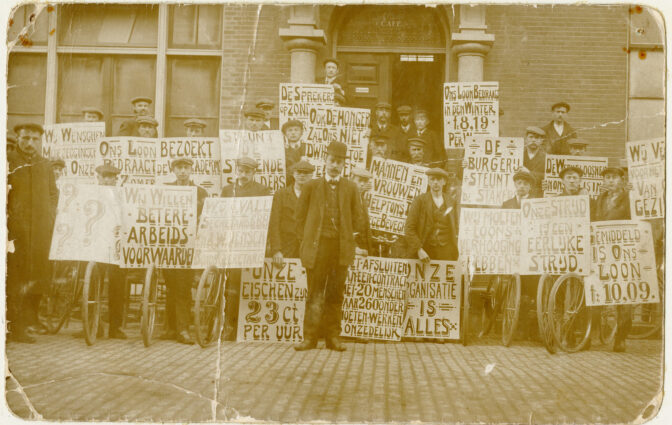A staking is a strike.
Local strikes have been documented since the sixteenth century. Strikes became more common in the twentieth century, when workers were becoming organized. Major strikes include:
- 1902: Textile strike in Twente (eastern part of Overijssel)
- 1903: Railway strike
- 1941: February strike in protest to start of deportation of the Jews by the German occupiers

Strike by painters in Groningen, 1912. Credits: Groninger Archieven, Beeldbank Groningen (public domain)


An interesting subject: ‘staking’ or strikes. A bit of math will soon teach one that downing tools is costly and takes long to recoup. Anyhow, you may consider this detail in Dutch history, which caused well-off folks to promote emigration to Canada in1893s when the first group left over 60 people departed for Winnipeg, Manitoba, Canada. The reason? Social unrest in the peatbogs of Friesland and Drenthe, notably, with the military police (the Marechaussee) breaking up strikes and job actions, particularly around 1890.
Here is a link with more info on Domela Nieuwenhuis: https://www.fryske-akademy.nl/fileadmin/inhoud/beelden/homepage/Kennis/It_Beaken/71_2009/It_Beaken_2009_1-2_45-72.pdf